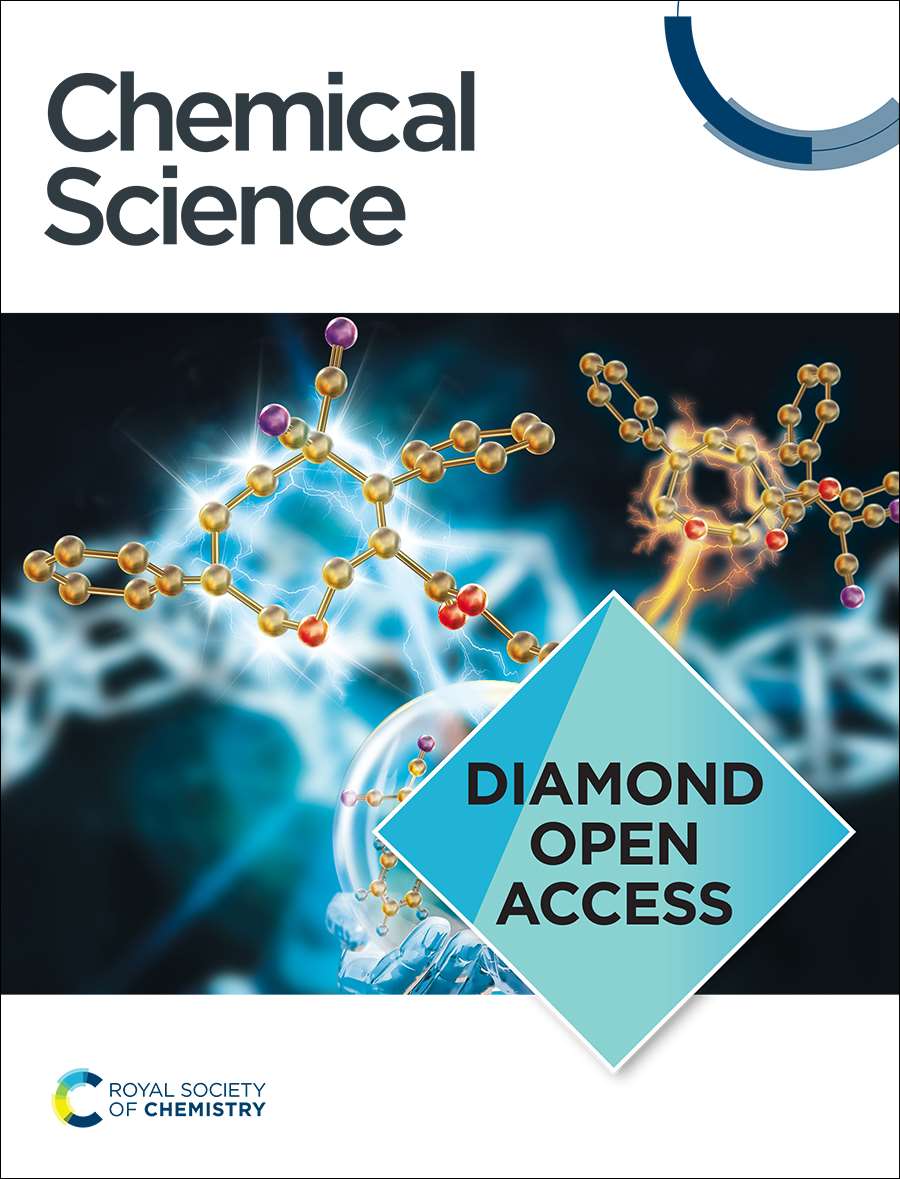Role of Ancillary Ligands in S-nitrosothiol and NO Generation from Nitrite-Thiol Interactions at Mononuclear Zinc(II) Sites
IF 7.6
1区 化学
Q1 CHEMISTRY, MULTIDISCIPLINARY
引用次数: 0
Abstract
Generation of S-nitrosothiol (RSNO) and nitric oxide (NO) mediated by zinc(II) coordination motifs are of prime importance for understanding the role of zinc(II)-based cofactors in various redox-signalling pathways. This study uniquely employs a set of mononuclear [L2ZnII]2+ cores (where L = Me4PzPz/Me2PzPy/Me2PzQu) for introducing subtle alterations of the primary coordination sphere and investigates the role of ligand tuning on the transformation of NO2– in the presence of thiols. Single crystal X-ray diffraction (SCXRD) analyses on [L2ZnII–X](X) (where X = perchlorate/triflate) illustrate consistent changes in the bond distances, thereby showing variations of the metal–ligand interactions depending on the nature of the heterocyclic donor arms (pyrazole/pyridine/quinoline). Moreover, such tuning of the ligands affects the Lewis-acidity of the [L2ZnII]2+ cores as evaluated by 31P NMR and SCXRD studies on the 1:1 acid-base adducts [L2ZnII(OPEt3)]2+. Crystallographic and 15N NMR spectroscopic analyses on the nitrite complexes [L2ZnII(κ2-nitrite)](ClO4) reveal that the chemical environment of the nitrite anions in these complexes are nearly identical, despite the dissimilarity in the Lewis-acidity of [L2ZnII]2+ cores. Interestingly, RSNO and NO generation from the reactions of [L2ZnII(κ2-nitrite)](ClO4) with 4-tert-butylbenzylthiol (tBuBnSH) exhibits that [(Me2PzQu)2Zn]2+ core is the most efficient in promoting nitrite-thiol interactionsdue to the ease of available hemilabile coordination site at the Lewis acidic [ZnII]. Detailed UV-vis studies in tandem with computational investigation, for the first time, provide an unambiguous demonstration of nitrous acid (HNO2) intermediate generated through an intramolecular proton-transfer from thiol to nitrite at zinc(II).辅助配体在单核锌(II)位点亚硝酸盐-硫醇相互作用生成 S-亚硝硫醇和 NO 中的作用
锌(II)配位基团介导的 S-亚硝基硫醇(RSNO)和一氧化氮(NO)的生成对于了解锌(II)基辅助因子在各种氧化还原信号通路中的作用至关重要。本研究独特地采用了一组单核 [L2ZnII]2+ 核心(其中 L = Me4PzPz/Me2PzPy/Me2PzQu )来引入主配位层的微妙变化,并研究了配体调整在硫醇存在下对 NO2- 转化的作用。对 [L2ZnII-X](X)(其中 X = 高氯酸盐/三氟氯酸盐)的单晶 X 射线衍射(SCXRD)分析表明,键距发生了一致的变化,从而显示出金属-配体相互作用的变化取决于杂环供体臂(吡唑/吡啶/喹啉)的性质。此外,通过对 1:1 酸碱加合物 [L2ZnII(OPEt3)]2+进行 31P NMR 和 SCXRD 研究,配体的这种调整会影响 [L2ZnII]2+ 核心的路易斯酸度。亚硝酸盐复合物 [L2ZnII(κ2-亚硝酸盐)](ClO4)的晶体学和 15N NMR 光谱分析显示,尽管 [L2ZnII]2+ 核心的路易斯酸度不同,但这些复合物中亚硝酸盐阴离子的化学环境几乎相同。有趣的是,[L2ZnII(κ2-亚硝酸盐)](ClO4)与 4-叔丁基苄基硫醇(tBuBnSH)反应生成的 RSNO 和 NO 表明,[(Me2PzQu)2Zn]2+ 内核在促进亚硝酸盐与硫醇的相互作用方面最为有效,这是因为路易斯酸性的[ZnII]内核具有易于利用的半亲和性配位位点。详细的紫外-可见光研究与计算研究首次明确证明了亚硝酸(HNO2)中间体是通过分子内质子转移从硫醇到亚硝酸锌(II)而生成的。
本文章由计算机程序翻译,如有差异,请以英文原文为准。
求助全文
约1分钟内获得全文
求助全文
来源期刊

Chemical Science
CHEMISTRY, MULTIDISCIPLINARY-
CiteScore
14.40
自引率
4.80%
发文量
1352
审稿时长
2.1 months
期刊介绍:
Chemical Science is a journal that encompasses various disciplines within the chemical sciences. Its scope includes publishing ground-breaking research with significant implications for its respective field, as well as appealing to a wider audience in related areas. To be considered for publication, articles must showcase innovative and original advances in their field of study and be presented in a manner that is understandable to scientists from diverse backgrounds. However, the journal generally does not publish highly specialized research.
 求助内容:
求助内容: 应助结果提醒方式:
应助结果提醒方式:


